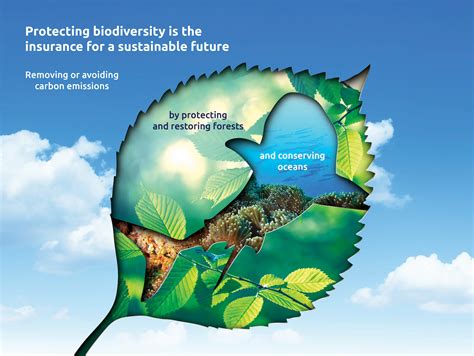In today’s world, the preservation of natural ecosystems is a critical and pressing issue. The delicate balance of natural ecosystems is essential for the health and well-being of our planet, yet they are constantly under threat from human activities and environmental degradation. In this blog post, we will delve into the field of environmental science and explore the various aspects of ecosystem preservation. From understanding the importance of natural ecosystems to studying the impact of human activities, we will examine the interconnections within ecosystems, the role of environmental science, biodiversity conservation, ecological restoration, sustainable development solutions, environmental policies, innovative technologies, and the promotion of public awareness and action for ecosystem conservation. Join us on this journey as we uncover the challenges and solutions facing the preservation of natural ecosystems and the vital role of environmental science in safeguarding the future of our planet.
Table of Contents
Understanding the Importance of Natural Ecosystems
Natural ecosystems are crucial for the sustenance of life on Earth. They provide a variety of services that are essential for the well-being of both the environment and human society. One of the most important functions of natural ecosystems is their role in regulating the Earth’s climate. Through processes such as photosynthesis and carbon sequestration, they help to mitigate the impacts of climate change. In addition, natural ecosystems are home to a vast array of biodiversity, playing a critical role in maintaining ecological balance and stability.
Furthermore, natural ecosystems also provide invaluable resources such as clean water, fertile soil, and timber. They also offer recreational and aesthetic benefits, contributing to the physical and mental health of individuals. The connection between human well-being and the health of natural ecosystems is undeniable, and it is important for us to acknowledge and appreciate the significance of these environments.
Despite their importance, natural ecosystems are facing numerous threats, including habitat destruction, climate change, pollution, and over-exploitation of resources. The degradation of these ecosystems can have far-reaching consequences, not only for the environment but also for human society. It is essential for us to work towards the conservation and sustainable management of natural ecosystems to ensure the continued provision of their valuable services.
By understanding the importance of natural ecosystems, we can strive towards adopting more environmentally-friendly practices and policies that will help to protect and preserve these vital areas. Through greater awareness and action, we can work towards creating a more sustainable future for both the environment and future generations.
Exploring the Interconnections within Ecosystems
Ecosystems are complex networks of living organisms and their surrounding environment, where all components are interconnected and interdependent. The interconnections within ecosystems play a crucial role in maintaining ecological balance and biodiversity. These interconnections can be seen in various forms, such as food webs, nutrient cycles, and symbiotic relationships among different species. Understanding these interconnections is essential for ensuring the sustainability and resilience of ecosystems in the face of environmental changes.
One of the key factors in exploring the interconnections within ecosystems is the concept of trophic levels. This refers to the hierarchical levels in a food chain, where energy is transferred from one organism to another. For example, a plant is consumed by a herbivore, which is then preyed upon by a carnivore. This interconnected web of feeding relationships illustrates how energy flows through an ecosystem and the consequences of disruptions to these interactions.
In addition to trophic levels, nutrient cycles also play a vital role in understanding the interconnections within ecosystems. Nutrients such as carbon, nitrogen, and phosphorus are essential for the growth and survival of living organisms. These nutrients cycle through the environment, moving from the abiotic components (such as soil and water) to the biotic components (such as plants and animals) and back again. Human activities, such as deforestation and pollution, can disrupt these nutrient cycles, leading to negative impacts on ecosystem health.
Furthermore, the interconnections within ecosystems can be observed through the intricate relationships between different species. For instance, pollinators like bees and butterflies play a crucial role in the reproduction of flowering plants, forming a mutualistic relationship where both parties benefit. Similarly, predator-prey relationships can regulate population dynamics and prevent the overgrowth of certain species. These interdependent relationships highlight the importance of maintaining the balance and diversity of species within ecosystems.
Examining the Role of Environmental Science
Environmental science plays a crucial role in understanding the complex interactions between humans and the environment. It involves the study of various aspects of the environment, including its structure, functions, and processes. By examining the role of environmental science, we can gain a deeper understanding of the impact of human activities on ecosystems and biodiversity.
One of the key roles of environmental science is to identify environmental problems and develop effective solutions to address them. This can involve conducting research, collecting and analyzing data, and collaborating with experts from various fields. Environmental scientists also play a vital role in raising public awareness about environmental issues and advocating for sustainable practices.
Furthermore, environmental science contributes to the development of environmental policies and regulations aimed at preserving and protecting natural ecosystems. By examining the role of environmental science, we can recognize its significance in promoting ecological restoration, rehabilitation, and sustainable development.
In conclusion, environmental science is essential for understanding, managing, and preserving the environment and its resources. By examining its role, we can appreciate the interdisciplinary nature of this field and its contributions to promoting public awareness and action for ecosystem conservation.
Analyzing Biodiversity and its Conservation
Biodiversity, or the variety of life on Earth, is essential for maintaining healthy ecosystems and providing numerous benefits to humans. Analyzing the factors that contribute to biodiversity and understanding the threats it faces is crucial for its conservation.
One key factor that affects biodiversity is habitat loss, which occurs as a result of deforestation, urbanization, and agricultural expansion. This loss of habitat can lead to the decline of plant and animal species, reducing overall biodiversity.
Another important aspect of analyzing biodiversity is studying the impacts of climate change. Changes in temperature and precipitation patterns can disrupt ecosystems and force species to migrate or adapt, often leading to shifts in biodiversity.
Conservation efforts aimed at protecting biodiversity involve preserving natural habitats, implementing sustainable land management practices, and reducing the impacts of climate change. It is also crucial to address the illegal wildlife trade, pollution, and invasive species that threaten biodiversity.
Investigating the Impact of Human Activities on Ecosystems
Human activities have had a profound impact on ecosystems around the world. From deforestation to pollution, the actions of humans have caused significant changes to the natural balance of these environments.
Deforestation has resulted in the loss of vital habitats for countless species, leading to a decline in biodiversity and disrupting the delicate interconnections within ecosystems.
Similarly, the release of pollutants into the air and water has led to the degradation of ecosystems, posing a threat to the health of both animal and plant species.
It is essential to recognize the ways in which human activities have contributed to the deterioration of ecosystems in order to develop effective strategies for conservation and restoration.
Learning about Ecological Restoration and Rehabilitation
Ecological restoration and rehabilitation are crucial aspects of environmental science, aiming to reverse the damage caused by human activities to natural ecosystems. The understanding of these processes is fundamental to ensuring the sustainability of our planet for future generations. By learning about ecological restoration and rehabilitation, we can actively contribute to the preservation of biodiversity and the maintenance of healthy ecosystems.
One of the key importances of ecological restoration and rehabilitation is the rejuvenation of degraded landscapes, such as deforested areas or polluted water bodies. Through the implementation of effective restoration techniques, it is possible to enhance the resilience of ecosystems, allowing them to better withstand environmental disturbances and climate change.
Furthermore, the exploration of innovative technologies for ecological restoration and rehabilitation is essential in addressing the challenges posed by the rapid degradation of natural habitats. By studying and implementing these technologies, we can make significant strides in reversing the negative impacts of human activities on ecosystems.
It is also important to analyze the role of environmental policies and regulations in supporting ecological restoration and rehabilitation efforts. By understanding the legal frameworks and incentives in place, we can advocate for the implementation of sustainable development solutions and promote public awareness and action for ecosystem conservation.
Discovering Sustainable Development Solutions
When it comes to finding solutions for sustainable development, it’s important to consider the long-term impact on the environment and society. Sustainable development aims to meet the needs of the present without compromising the ability of future generations to meet their own needs. This requires finding a balance between economic growth, social progress, and environmental protection.
One key solution for sustainable development is the implementation of renewable energy sources such as solar, wind, and hydroelectric power. These sources not only reduce reliance on fossil fuels but also have a minimal impact on the environment, making them a viable long-term solution for meeting energy needs.
In addition, sustainable development solutions involve promoting sustainable agriculture practices, which focus on maintaining healthy ecosystems, conserving natural resources, and supporting local communities. Sustainable agriculture aims to reduce the environmental impact of farming while ensuring a reliable food supply for future generations.
Finally, sustainable development solutions require innovative urban planning approaches that prioritize energy efficiency, public transportation, and green spaces. By creating cities that are designed with sustainability in mind, we can reduce pollution, preserve natural habitats, and improve overall quality of life for urban residents.
Studying Environmental Policies and Regulations
When it comes to preserving our natural ecosystems, studying environmental policies and regulations is crucial. These policies are put in place to ensure that human activities do not negatively impact the delicate balance of our ecosystems. By understanding and adhering to these regulations, we can work towards a sustainable future for all living organisms.
Environmental policies and regulations are designed to address a wide range of issues, from air and water quality to biodiversity conservation. They provide a framework for decision-making and action at local, national, and international levels, and are essential for promoting responsible environmental stewardship.
Studying these policies can also help us gain a better understanding of the legal and ethical considerations surrounding environmental protection. By exploring case studies and examples of successful policy implementation, we can identify best practices and learn from past mistakes. This knowledge can then be applied to improve existing regulations and create new ones that are more effective in addressing current and future environmental challenges.
Overall, studying environmental policies and regulations is a critical step in ensuring the long-term health and vitality of our ecosystems. By staying informed and actively participating in the development and enforcement of these policies, we can contribute to the preservation and protection of the natural world for generations to come.
Exploring Innovative Technologies for Ecosystem Preservation
As our world continues to face environmental challenges, it has become increasingly important to explore innovative technologies for the preservation of our ecosystems. These advancements play a crucial role in helping to mitigate the impact of human activities on the natural world.
In recent years, there has been a growing focus on the development of technology that can aid in the conservation and restoration of ecosystems. From drones and satellite imagery to artificial intelligence and machine learning, these tools are being used to monitor and manage the health of our natural environments.
One example of innovative technology in ecosystem preservation is the use of remote sensing to track changes in land use and land cover. By analyzing data from satellite imagery, researchers can monitor deforestation, urban expansion, and other forms of habitat destruction.
Furthermore, advancements in genetic engineering have led to the development of bio-remediation tools that can help to clean up polluted ecosystems. These technologies harness the power of living organisms to remove contaminants from soil, water, and air, offering a promising solution for addressing environmental pollution.
Promoting Public Awareness and Action for Ecosystem Conservation
As our world continues to grapple with the consequences of climate change and environmental degradation, the need for ecosystem conservation has never been more urgent. Public awareness and action play a crucial role in this endeavor, as individuals, communities, and governments all have a role to play in preserving our planet’s natural ecosystems.
One of the key strategies for promoting public awareness is education. By providing people with information about the importance of ecosystems and the threats they face, we can empower them to take action in their own lives. This can involve simple changes, such as reducing water and energy consumption, as well as supporting policies and initiatives that prioritize environmental protection.
Another vital aspect of promoting public awareness is advocacy. By raising our voices and encouraging others to do the same, we can influence decision-makers and drive change at a systemic level. This can involve supporting organizations and movements that are dedicated to ecosystem conservation and participating in events and campaigns that raise the profile of these issues.
Ultimately, promoting public awareness is about fostering a sense of responsibility and connection to the natural world. By highlighting the ways in which our lives are intertwined with ecosystems and the impact of our actions, we can inspire others to join the cause and work towards a sustainable and harmonious relationship with the environment.





